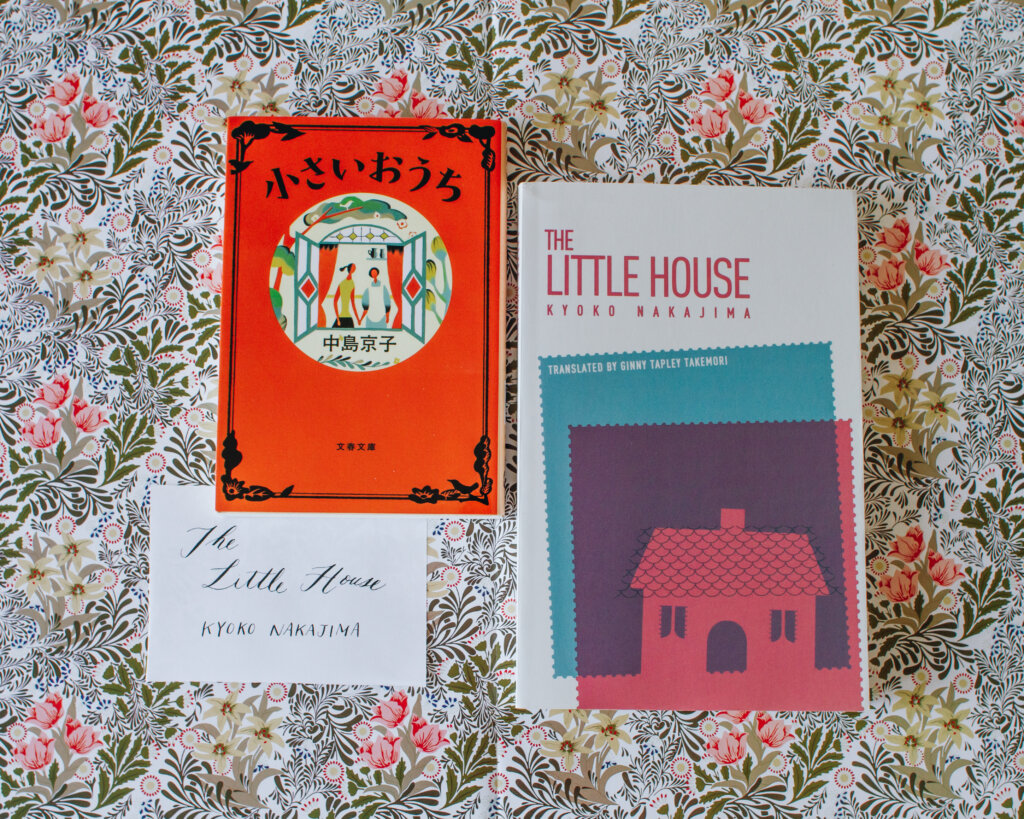
How should history be remembered? How much do you know about ordinary people’s lives during wartime?
歴史をどう記憶するべきでしょうか。戦時中の市民の様子について、どのくらい知っていますか?
‘The Little House’ is a fiction novel set during the 1930-40s in Japan, taking the reader through the period of World War II, and written from the point of view of an elderly woman called ‘Taki.’ In the style of a memoir, the story starts when Taki was a young girl, going to the city of Tokyo to become a maid. The novel gradually, slowly starts showing glimpses of change in the lives of ordinary citizens due to the start of the War. Beginning with subtle changes and progressing through to bigger ones, the book depicts how citizens perceived this critical time in Japanese history, as seen through both Taki’s life and the people surrounding her.
「小さいおうち」は1930~40年代の日本を舞台に書かれたフィクション、第2次世界大戦の足音が忍び寄る時代を、女中のタキの視点で描いています。回想録の形式をとっているストーリーは、タキが若くして東京へ奉公へと向かうことから始まります。忍び寄る戦争の影は、タキの生活にも小さな変化が垣間見える様子から伝わってきます。そしてその影が大きく濃くなっていく様子を、タキと彼女の周りの人々の生活の様子から感じ取るのは臨場感もあります。
What makes this book significant compared to other Japanese books about the wartime period is that it really makes an effort to capture the ‘feeling’ and perceptions of ordinary citizens. By not merely focusing on the political side of the war, it aims to genuinely tell a story of the ‘people’ in Japan, instead of key battlefields or political figures. As this overriding theme implies, the book does contain some sad elements – however, the overall tone leans more toward the heartwarming and humorous. Taki’s rather cute personality never ceases to make the reader smile. Small details of everyday life and Japanese culture are documented beautifully through Taki’s daily chores and human relationships. In particular, the relationship between Taki and her Mistress went a long way to making the book both entertaining and comforting!
一般市民の感情や感覚を描いている点が、この本が特別に感じる理由。政治家や戦場について描くのではなく、あくまで日本の「人々」が経験し感じた戦争の姿が見えてきます。戦時中が舞台の物語であるため、もちろん悲しいシーンもありますが、全体的にはユーモアにあふれ、あたたかいトーンで書かれているのが特徴的。特に、主人公のタキさんがとてもかわいらしい女性で、読みながら思わず微笑んでしまいます。日本の生活の繊細な美しさを、タキの仕事や人々との会話の中から知ることができるのもステキ。特に、タキと時子の関係性には心に響くものがありました。
This novel made me question intensely how war memory should be both told and remembered. The narrative this book conveys was very different from what I learned from history textbooks at school; however, it was great to be able to add a variety of alternate historical perspectives to be read and understood as part of the wider picture, especially ones like this which are more focused on the viewpoint of ordinary citizens. In this respect, Taki’s narrative will surely help you understand more about Japan and this crucial point in its history.
戦時中の記憶を、どのように語るべきか。この本が語る戦争は、私が歴史の教科書から学んだ戦争の姿とはまた違う姿を教えてくれたように思います。教科書や歴史本、政治や軍の視点から見る戦争の姿と同様に、こうして、市民の視点から見た戦争の様子を語るフィクションも生まれ、広く読まれるのは、意味があることだなと感じます。
‘The Little House’ won the Naoki Prize in 2010, and was made into a film in 2014.
「小さいおうち」は2010年の直木賞受賞作で、2014年には映画化もされています!英語訳も出ています!!
文春文庫
Darf Publishers (Translated by Ginny Tapley Takemori )
